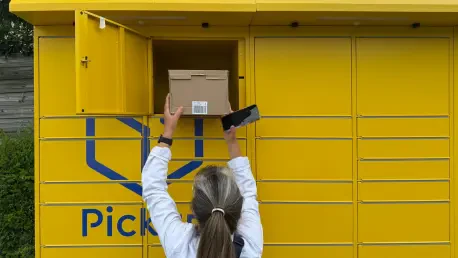I’m thrilled to sit down with Marco Gaietti, a veteran in business management with decades of experience in management consulting. Marco’s deep expertise in strategic operations and customer relations makes him the perfect person to dive into the evolving world of logistics, particularly in the Out-of-Home (OOH) parcel locker market and reverse logistics. Today, we’ll explore how innovative solutions are tackling last-mile delivery challenges, the growing importance of efficient returns processes, and the future of smart locker infrastructure in e-commerce.
Can you share your perspective on why Out-of-Home solutions like parcel lockers are becoming so crucial for the future of e-commerce?
Absolutely. The explosion of e-commerce has put immense pressure on traditional delivery systems. Delivering to individual homes at the current volume is not sustainable due to skyrocketing costs and inefficiencies in last-mile logistics. OOH solutions, like parcel lockers, offer a way to consolidate deliveries to a single location, slashing costs for courier companies and reducing the environmental footprint. Beyond that, they address consumer demand for flexibility—people want to pick up parcels on their own time, not wait for a delivery window.
What do you see as the biggest hurdles in last-mile delivery that make innovations like smart lockers a necessity?
Last-mile delivery is notoriously expensive and complex. The biggest hurdles are the sheer volume of parcels, unpredictable delivery windows, and the high failure rate of first-attempt deliveries. Every missed delivery means additional trips, more fuel, and higher costs. Smart lockers solve this by acting as a reliable drop-off point, eliminating the need for repeated attempts and ensuring parcels are secure until the customer retrieves them.
How do you think consolidating deliveries to a single locker location impacts the operational efficiency of logistics providers?
It’s a game-changer. Instead of a courier navigating to dozens of individual addresses, they can drop off multiple parcels at one locker location in a fraction of the time. This cuts down on fuel costs, reduces traffic congestion, and allows couriers to handle higher volumes in a single route. It’s not just about cost savings—it’s also about scalability as e-commerce continues to grow.
Shifting gears to returns, why do you believe reverse logistics is such a significant pain point for retailers and logistics providers today?
Returns are a massive drain on resources. With e-commerce, customers often order multiple items intending to return some, and studies show that as many as one in five parcels are sent back. This creates a reverse logistics nightmare—processing returns, managing inventory, and absorbing shipping costs eat into profit margins. Plus, offering free returns has become a competitive necessity for retailers to retain customers, which only compounds the issue.
Can you explain how a streamlined returns process can influence customer loyalty and behavior in the long term?
A smooth returns process is critical for building trust. When customers know they can return items hassle-free, they’re more likely to shop with confidence. Data suggests that nearly all customers—around 97%—will return to a retailer that handles returns well. It’s not just about convenience; it’s about creating a positive experience that encourages repeat business, which is far more cost-effective for retailers than acquiring new customers.
How do innovations in locker technology, especially for returns, address the challenges faced by both consumers and couriers?
Modern locker systems designed for returns simplify the process for everyone. For consumers, integrated features like built-in printers for return labels make dropping off a parcel quick and painless. For couriers, these systems often use shared collection methods, where all returns go into a single, easily accessible container that can be swapped out in seconds. This cuts down on pickup time and ensures efficiency, addressing both convenience and cost concerns.
Looking at the broader logistics landscape, how do you see companies positioning themselves as essential players in OOH infrastructure?
Companies that focus on OOH infrastructure are becoming the backbone of modern logistics by providing scalable, reliable solutions that bridge the gap between e-commerce providers and courier services. They’re investing in versatile locker systems that cater to diverse needs—deliveries, returns, and even click-and-collect options. By ensuring high uptime, robust maintenance, and seamless integration with partners’ systems, they position themselves as indispensable to the ecosystem.
What role do strategic partnerships play in driving growth for companies in the smart locker and OOH market?
Partnerships are everything in this space. Collaborating with major e-commerce platforms, retailers, and logistics providers allows OOH companies to expand their reach and integrate into existing networks. These alliances also build credibility and trust, showing that big players rely on their infrastructure. It’s a symbiotic relationship—partners gain access to efficient delivery and returns solutions, while OOH providers scale their operations through increased volume and visibility.
What is your forecast for the future of OOH solutions and smart lockers in the global logistics industry?
I’m incredibly optimistic about the future of OOH solutions. As e-commerce continues to grow, especially in densely populated urban areas, smart lockers will become the default for last-mile delivery and returns. We’ll see advancements in locker technology, like enhanced security features and IoT integration for real-time tracking. I also expect expansion into new markets, including North America, where issues like package theft are driving demand for secure alternatives. Over the next decade, OOH infrastructure will be as commonplace as ATMs are today, fundamentally reshaping how we think about delivery.









